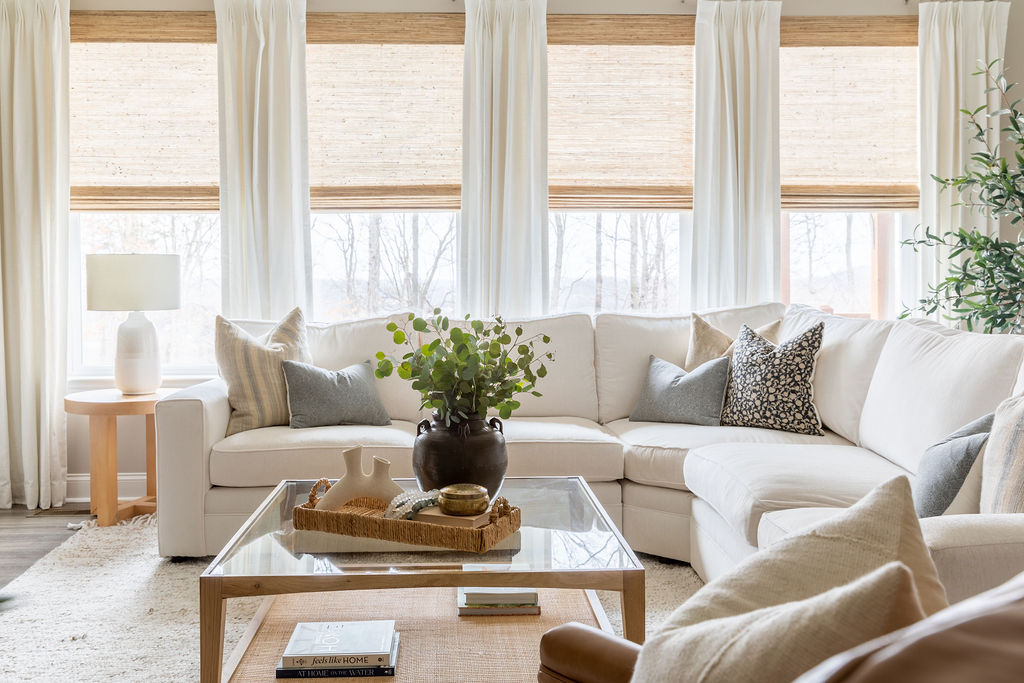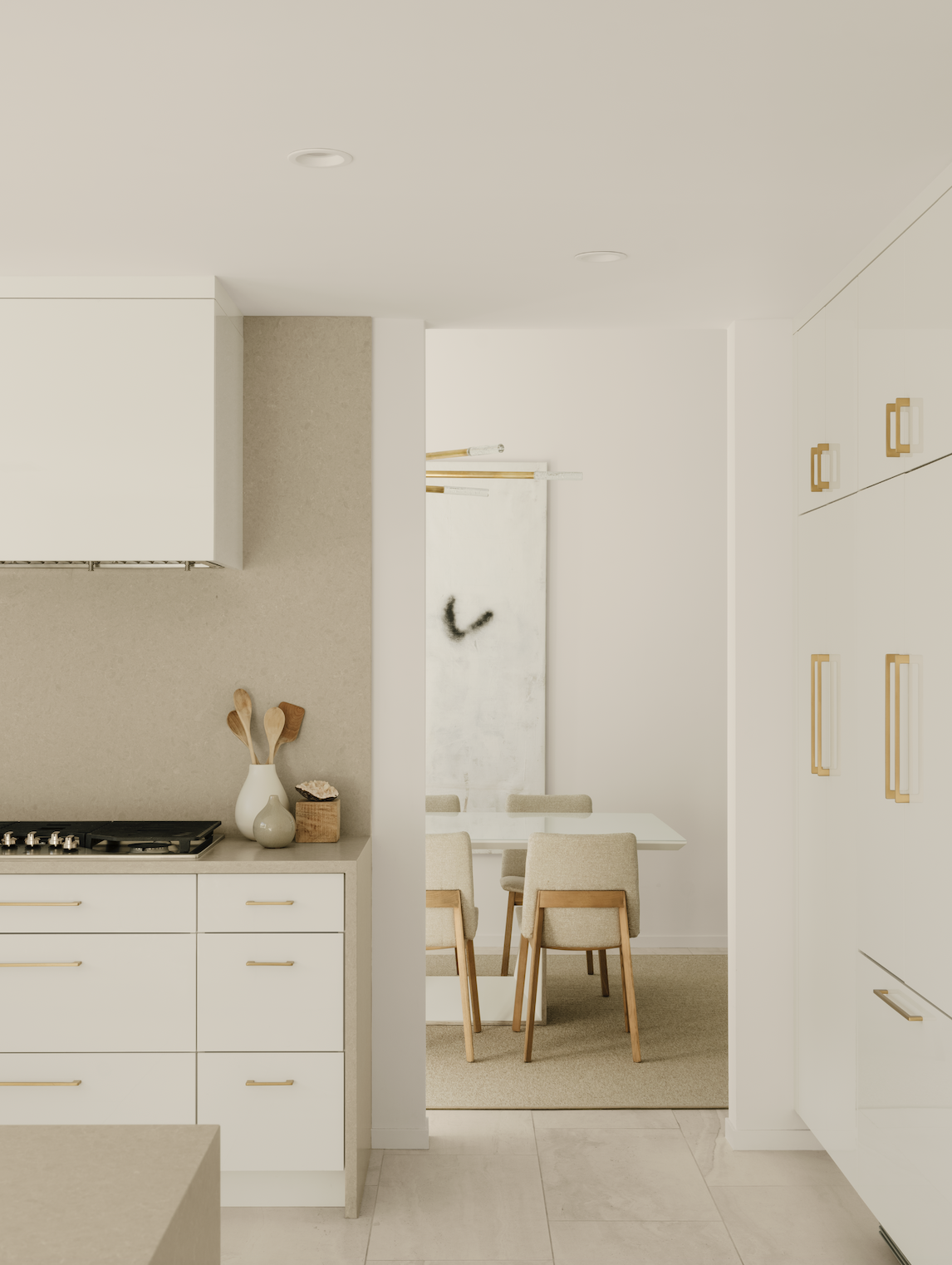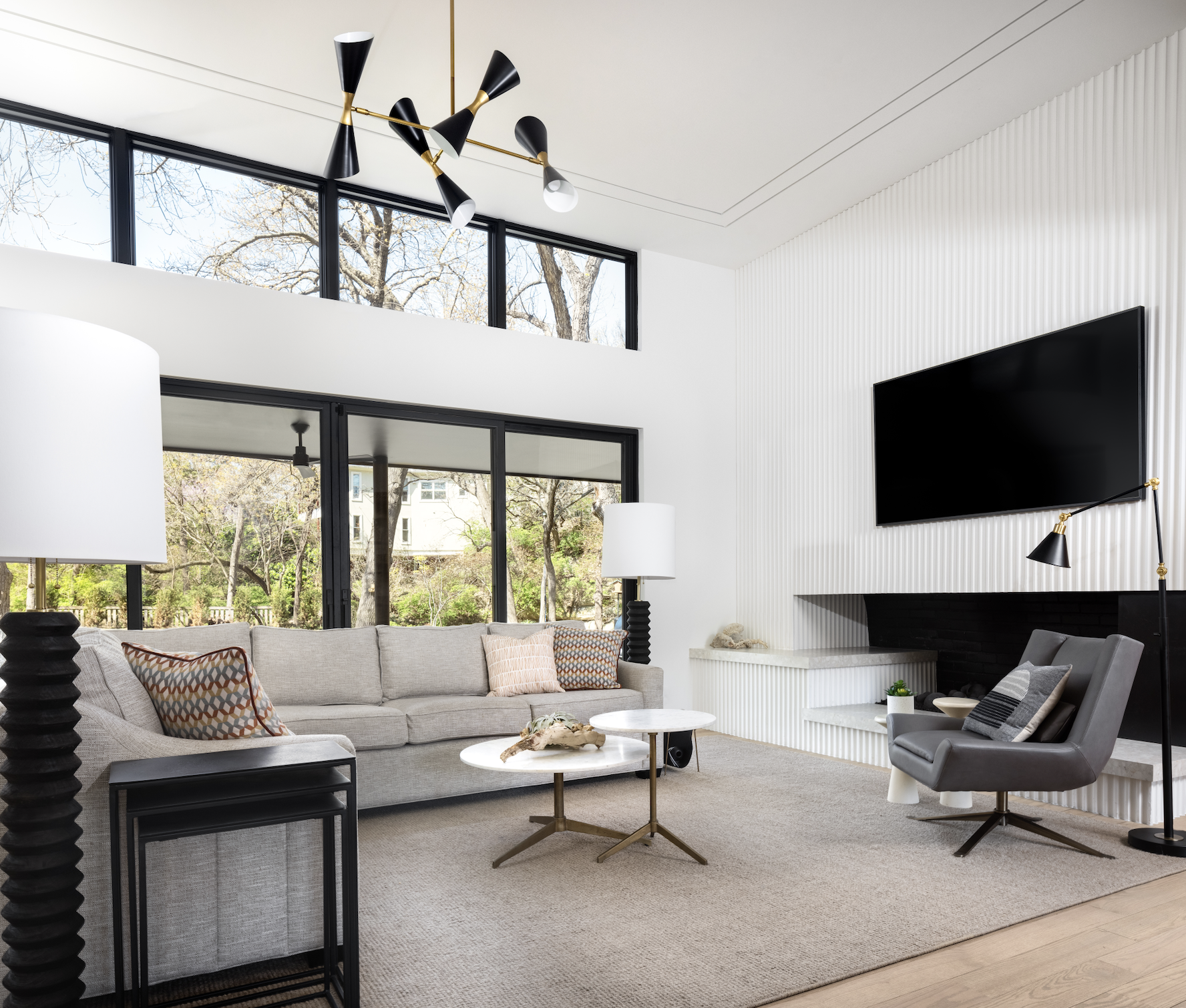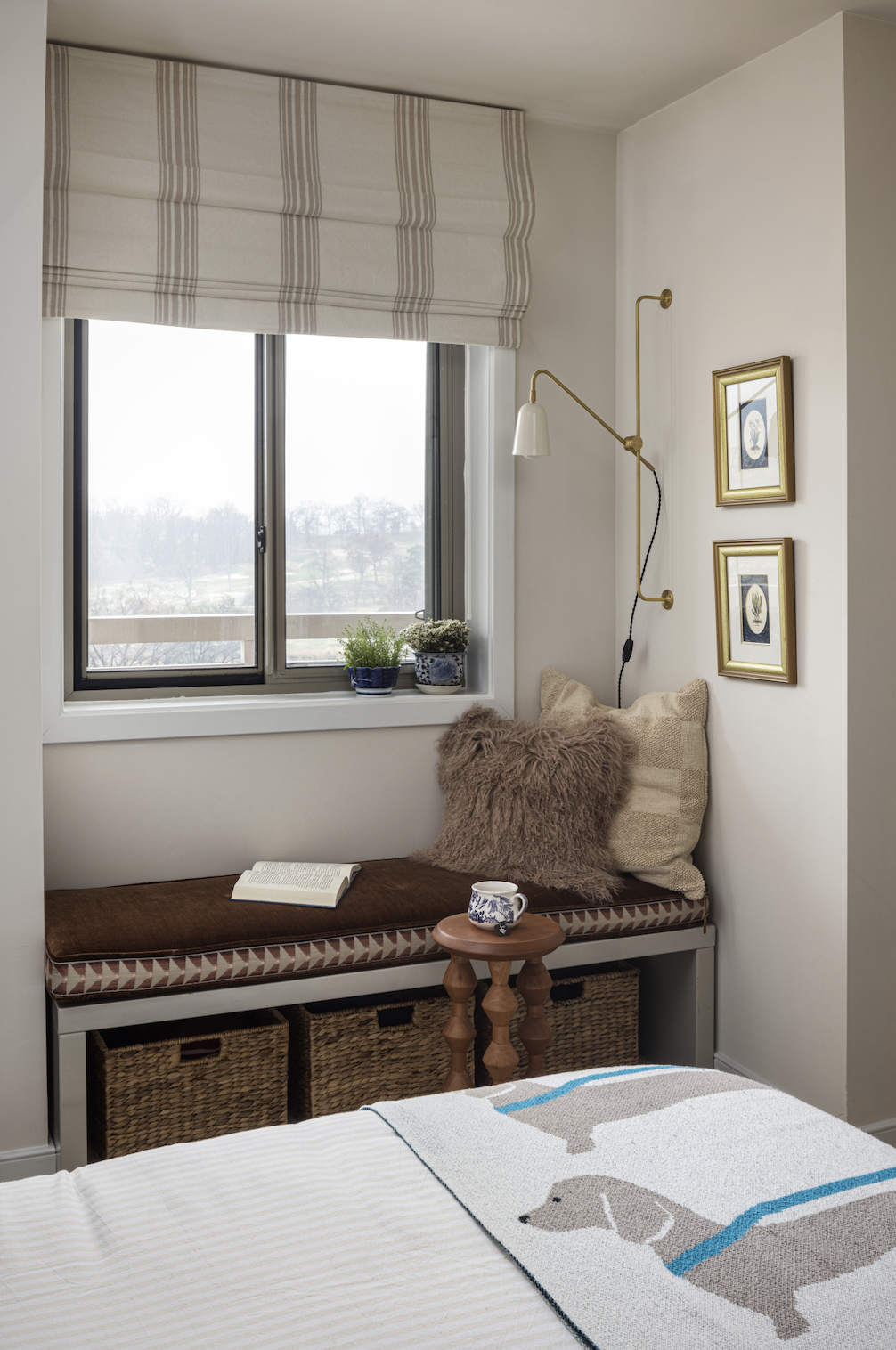
A decluttered space is synonymous with a minimalist design ethos — but what's the difference between the two? Well, you can think of decluttering as an action you undertake, whereas minimalism is a lifestyle, as well as a style of design. Decluttering doesn't always lead to minimalism, but minimalist spaces are always free from unnecessary clutter.
It’s sometimes easier said than done reducing the quantity of ‘stuff’ that we have in our homes but in reality, how much of it goes unused and gathers dust on shelves? Being conscious of everything that takes up space in our homes is important for living an ordered and stress-free life.
We asked professional organizers and designers for their advice on how to declutter your home to achieve a minimalist aesthetic.
1. Start with horizontal surfaces

Firstly, focus on the horizontal surfaces you have in each room. This could be a stand alone piece of furniture, alcove shelving or decluttering kitchen countertops. Take everything off the surfaces and do an audit of what you want to keep and what you want to get rid of.
Shara Kay from SK Organizing goes on to explain ‘to see fast results, focus on horizontal surfaces like tabletops and countertops first. Reducing the number of items on display will make it easier to clean your home and will reduce the visual “noise” that can heighten stress levels’.
Yes, cupboards and hidden storage should definitely be tackled but it’s a good idea to start with the surfaces that are on show to ease visual overstimulation.
2. Avoid the snowballing effect
One of the quickest ways to make your home feel more ordered and calm is to tackle things before they become a bigger issue. As soon as something is out of place or feels cluttered, take time to sort it there and then.
‘To live our busy lives with family, kids, and pets, there's bound to be a lot of stuff! The important thing to keep in mind is how you curate the clutter. Make it a habit of clearing clutter as you come across it and being proactive in putting things away. If you can put something away in less than five minutes, just do it! These small organizational actions can help clutter from snowballing day to day’, says Joshua Smith, principal and founder of Joshua Smith Inc.
This practice can lead to snowball decluttering, which will help you tackle bigger tasks from a good starting point, too.
Price: $10.99
Format: Paperback
Price: $16.99
Format: Hardcover
3. Leave negative space

When it comes to designing a particular space in the home, it’s important for there to be intention behind it. Consider how you can vary heights and mix up different textures. Also, try to leave some space in-between each item to create the appearance of an ordered home using negative space in interior design.
‘All those tchotchkes collected from travel or as gifts likely have a significant meaning to you and will only enhance the beauty you see in your home if displayed properly. Try spreading them throughout the home, spreading joy to each corner of your space in the process. When arranging your trinkets, be sure to leave negative space for the eye to wander and breathe. This will help make a space look curated rather than cluttered’, says Joshua.
4. Edit not purge
Try not to fall into the trap of going on a cleaning spree and getting rid of almost everything in your home. This isn't really the essence of minimalism in interior design, and this is arguably just as unproductive as producing clutter. ‘Decluttering doesn't mean getting rid of every tiny item in your home. It can often mean finding the appropriate spot for something’, says Joshua.
‘A large number of my clients express a desire for a more minimalist lifestyle or even claim to be minimalists,' explains Ben Soreff from H2H Organizing. 'If you have children, then living as a real minimalist can be very difficult. Instead, we urge our clients to think about why they are keeping an item instead of focusing on purging. People have anxiety when they are not in control and sometimes they feel that by getting rid of everything they will be free or at the very least in control. However, this is a false equivalency. We want to think about how expensive something is and how hard it is to get again to determine if we should keep it.'
5. Change your mindset

To keep your home looking and feeling in order you may need to consider changing your mindset. Before anything enters your home, you may need to form your own checklist to see whether it deserves a spot or not. ‘Through good organizing and having proper systems you can find what you are looking for and cut out the clutter. The true way to live minimally is to not have items enter your space in the first place, and for the items that do enter to be well made and will last’, Ben suggests.
When it comes to decluttering and minimalism, the important thing to remember is that if you threw out everything you owned, you still would not necessarily be organized. Sometimes it is less important to get rid of things and more important to have a plan. We don't want regret or anxiety when we declutter, and minimalism isn't an empty home, it's a thoughtful approach to what you choose to keep in it.







